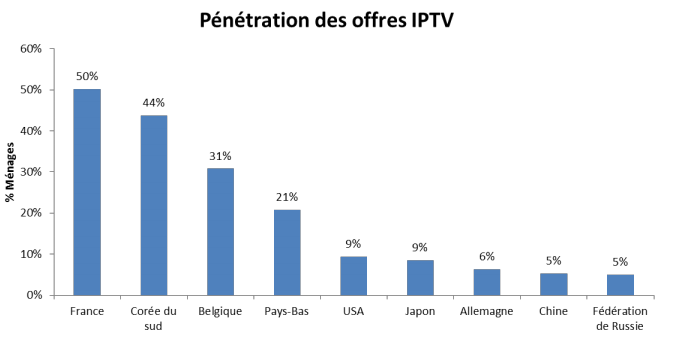
The explosive growth of IPTV: Towards a revolution in television streaming.
The Internet Protocol Television (IPTV) market was valued at USD 72.34 billion in 2020 and is expected to reach USD 193.21 billion by 2026, with a Compound Annual Growth Rate (CAGR) of 17.98% during the forecast period from 2021 to 2026. The market is undergoing a transition from traditional broadcast modes such as cable or satellite TV to internet streaming, and IPTV plays a significant role in this transition. Technological advancements and improvements in network architecture have positively contributed to this evolution.
Technological progress has led to an increase in IPTV subscribers, with growing demand for high-definition channels and video-on-demand. The expansion into new markets has also contributed to the rise in subscriptions. The rise of internet streaming services is also driving the IPTV market. Companies are offering comprehensive packages combining IPTV with OTT services, video calls/conferencing, smart homes, and video gaming. These attractive strategies attract customers and foster IPTV market growth. Furthermore, government initiatives in developing countries such as India, which promote digital television, are driving IPTV adoption. However, competition from local cable TV and satellite TV, due to cost reductions and lack of infrastructure for interference-free quality service, to some extent limits IPTV adoption.
Main market trends
The increasing demand for high-definition channels and video-on-demand is driving market growth. Growing economies worldwide are increasing the disposable income of the population, enhancing their lifestyles, especially in developing countries. With economic growth, internet penetration has significantly increased, leading TV service consumers to demand a better user experience in terms of quality and mobility. The rising use of the internet for video content streaming is also a key factor, with an average of 190 GB of data usage per household in the United States in 2017, of which 93% was consumed by video content. Internet live streaming also contributes to the increase in internet usage, which plays a vital role in IPTV growth.

Significant growth is expected to occur in the Asia-Pacific region.
The Asia-Pacific region presents strong growth potential due to the rapid expansion of high-speed access and evolving content consumption habits. Countries like India and China, with GDP growth rates of 8.2% and 6.3% respectively in 2018, exhibit increasing adoption of IPTV in households due to rapid urbanization. The availability of investment in content has also led to the creation of diverse content offerings, surpassing even Hollywood. India is emerging as a content production hub, with an abundance of material created for both local and international consumption. Additionally, the growth in the number of smartphone users in the region has fueled demand for IPTV services on mobile devices. The Asia-Pacific region accounts for over half of the world's smartphone users, which surpassed 3 billion in 2018.
Government initiatives in India aimed at digital transformation, such as cable TV digitization and direct-to-home (DTH) broadcasting services, also promote IPTV adoption in the country. The emergence of network service providers has reshaped the IPTV landscape in India, with some even offering free live IPTV subscriptions to their customers. With other companies following suit, the demand for mobile device-based IPTV services is expected to significantly increase in the region.
In summary, the IPTV market is experiencing significant growth, driven by technological advancements, increasing subscriber numbers, and growing demand for high-quality content. The transition to internet streaming and IPTV is underway, with promising growth prospects, especially in the Asia-Pacific region. Governments are also supporting this evolution with digital transformation initiatives.
